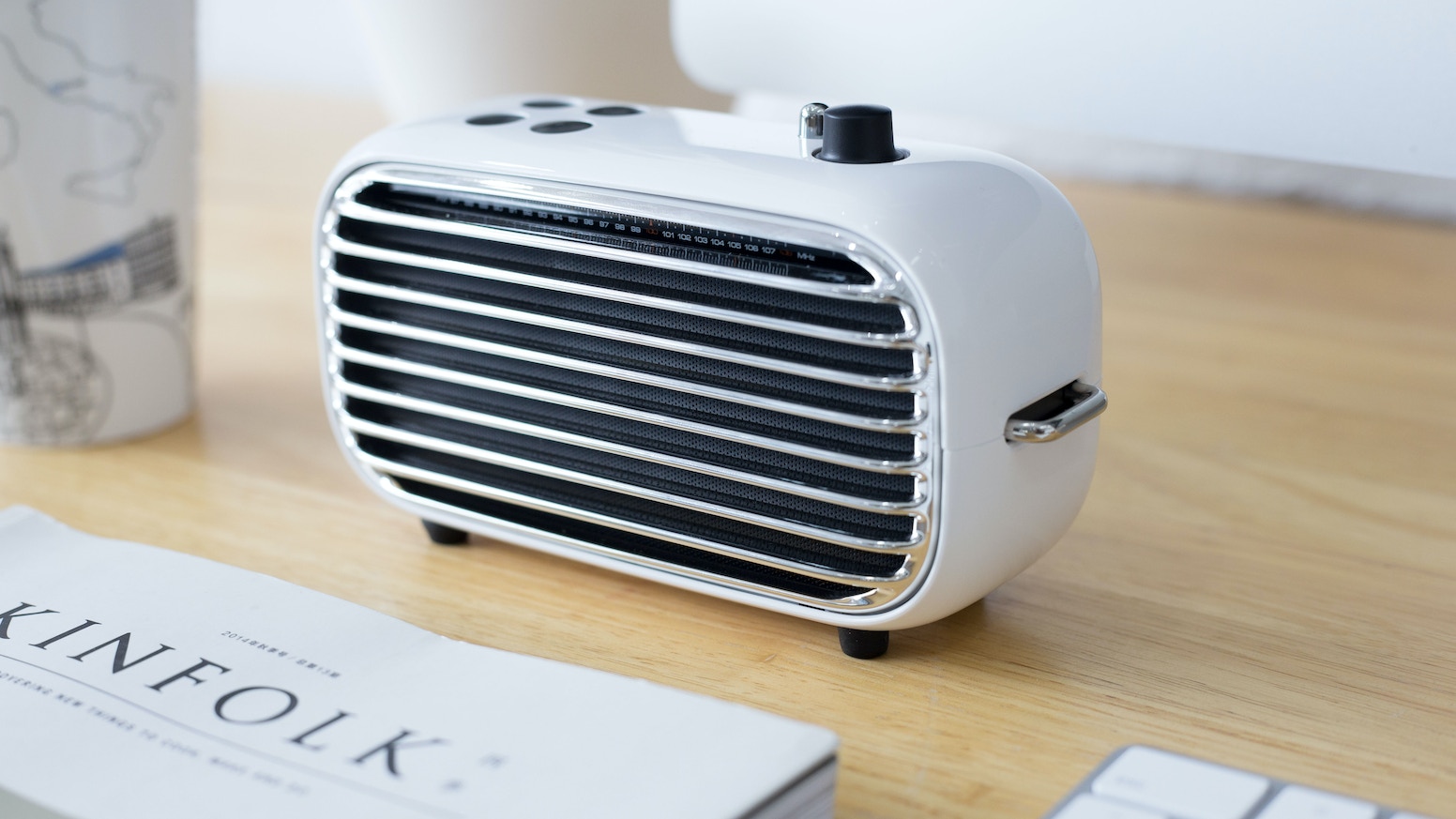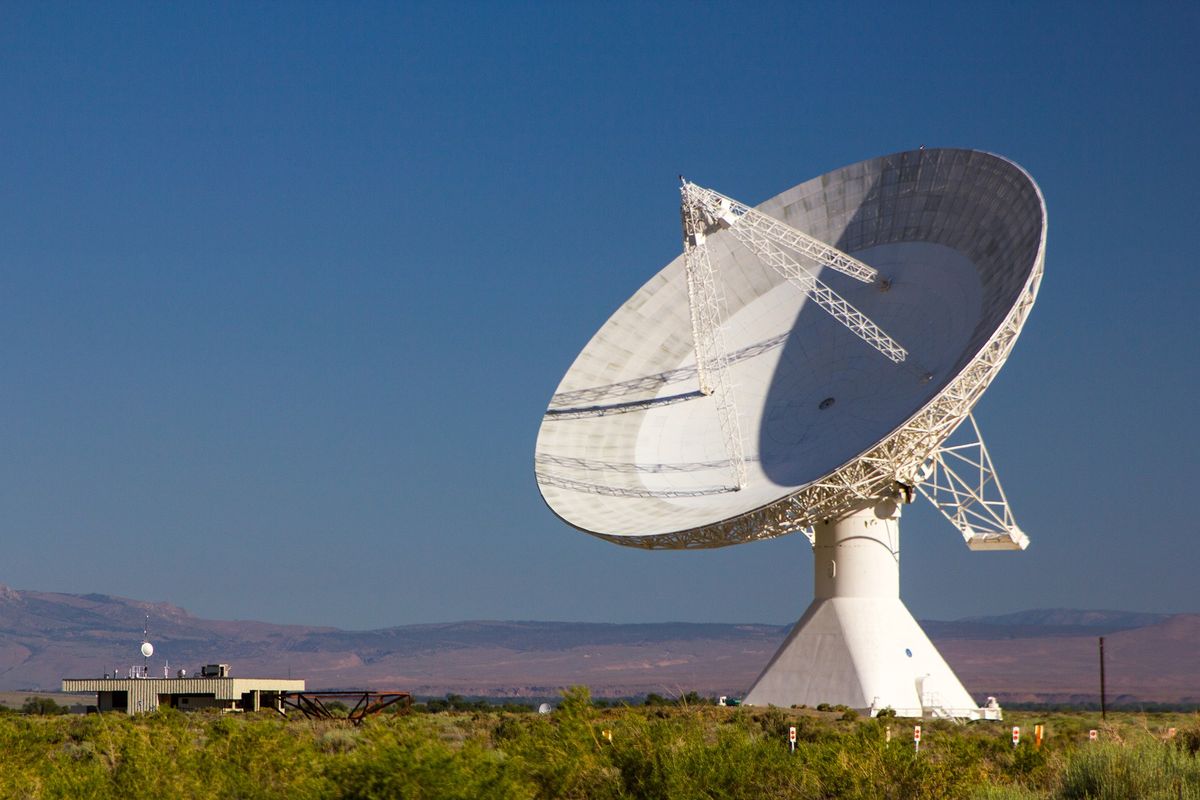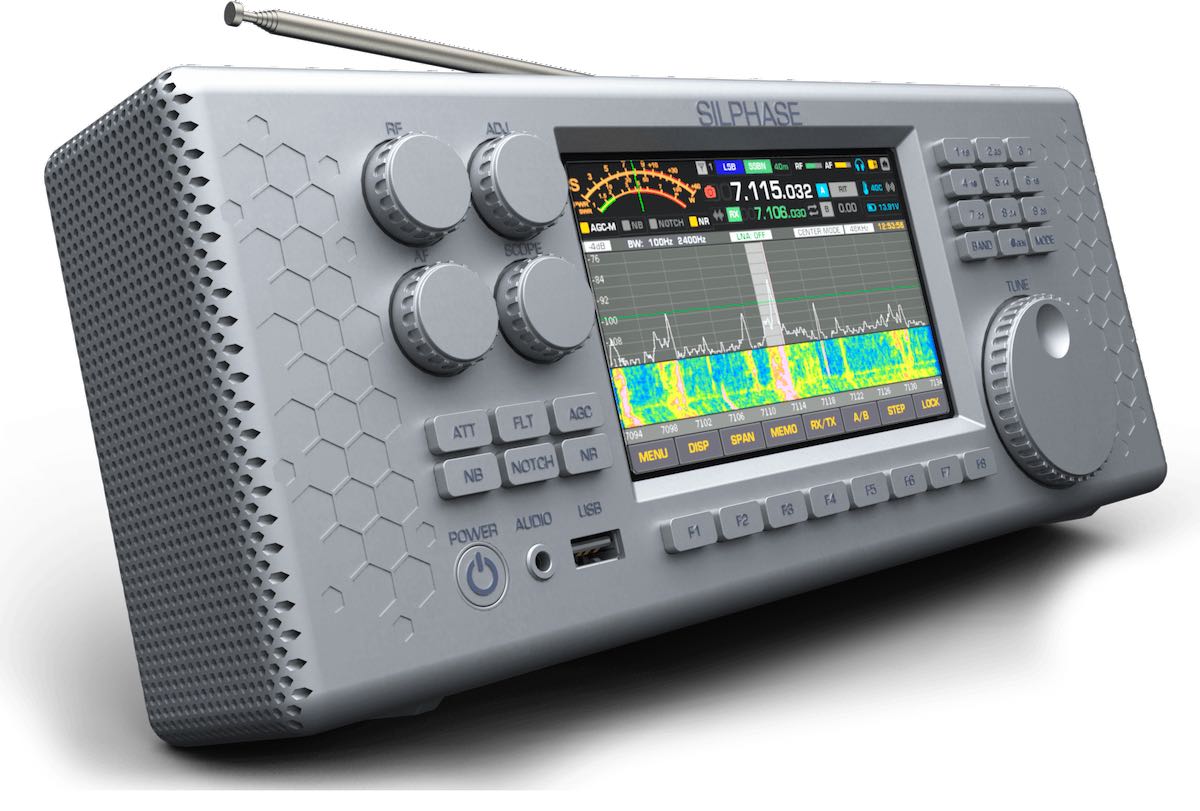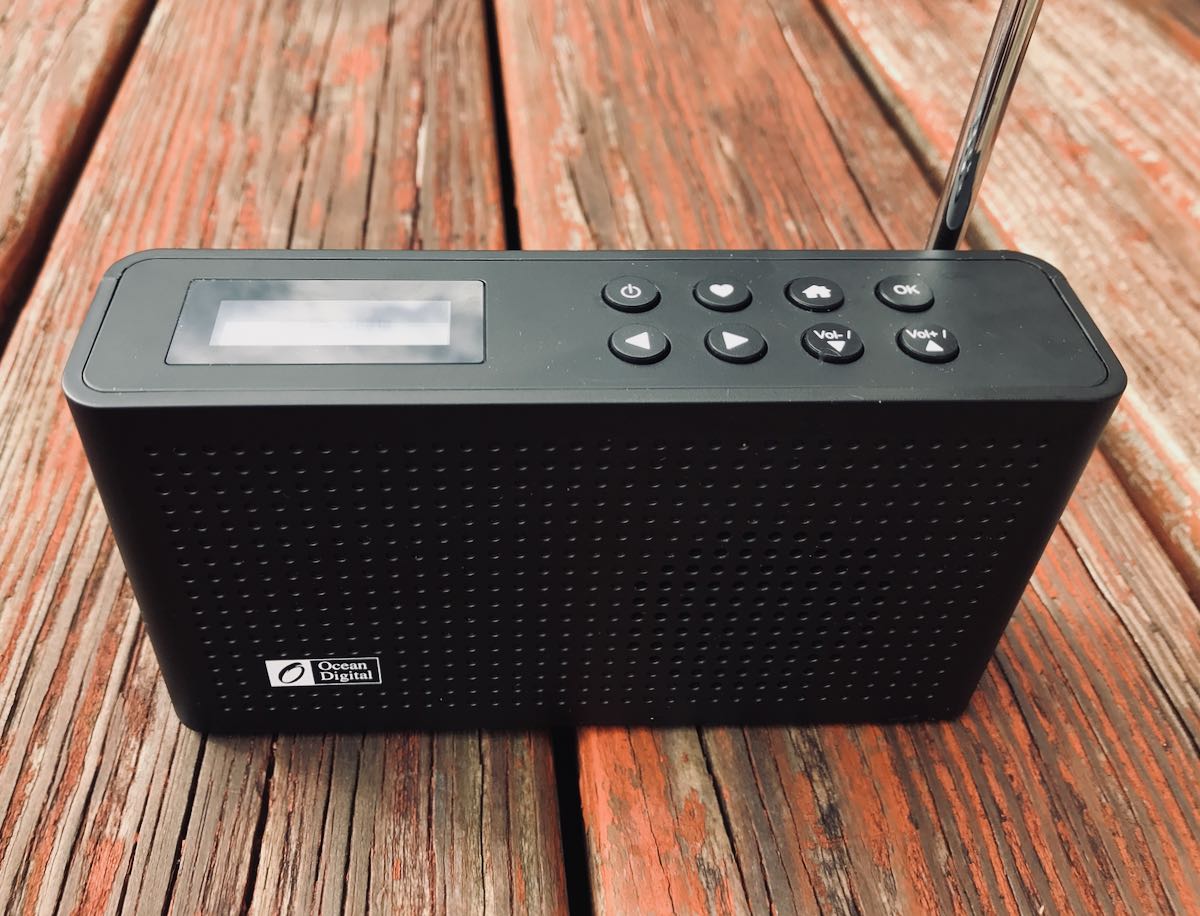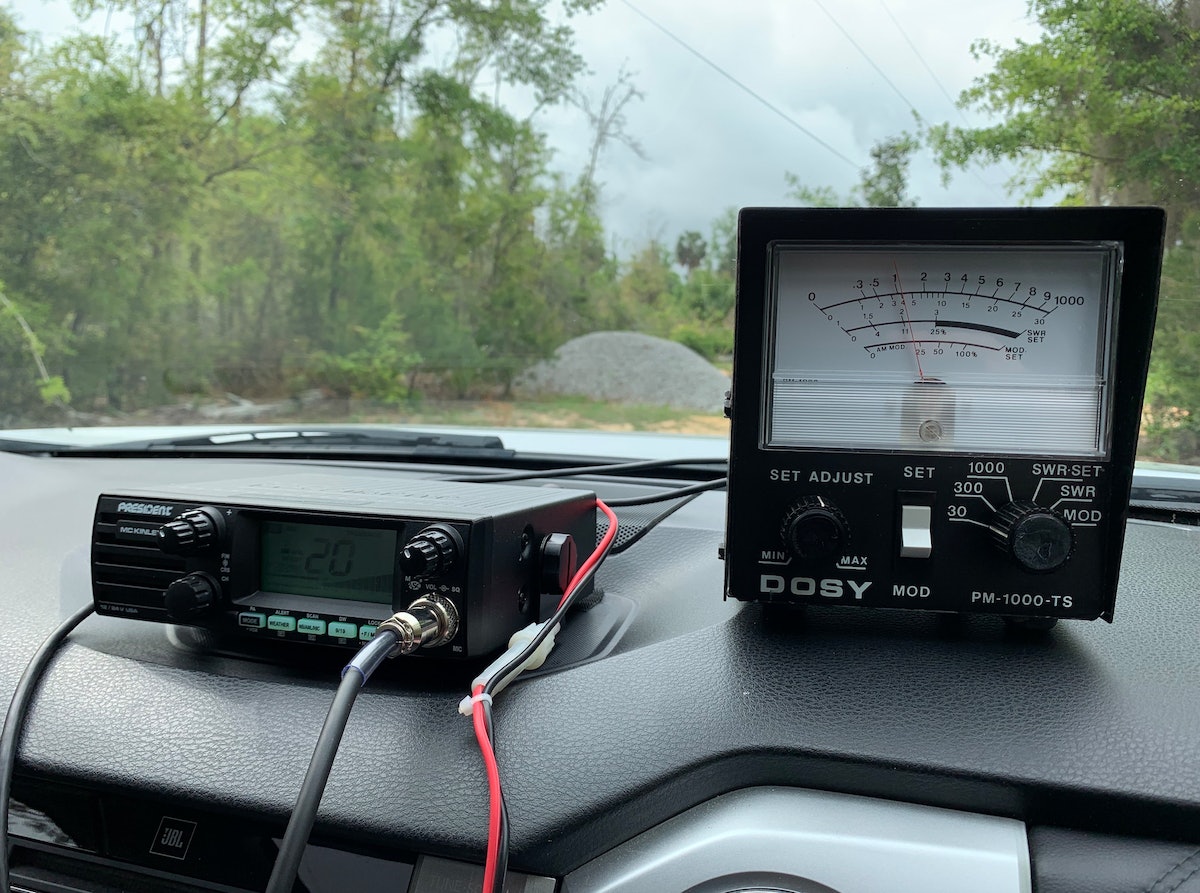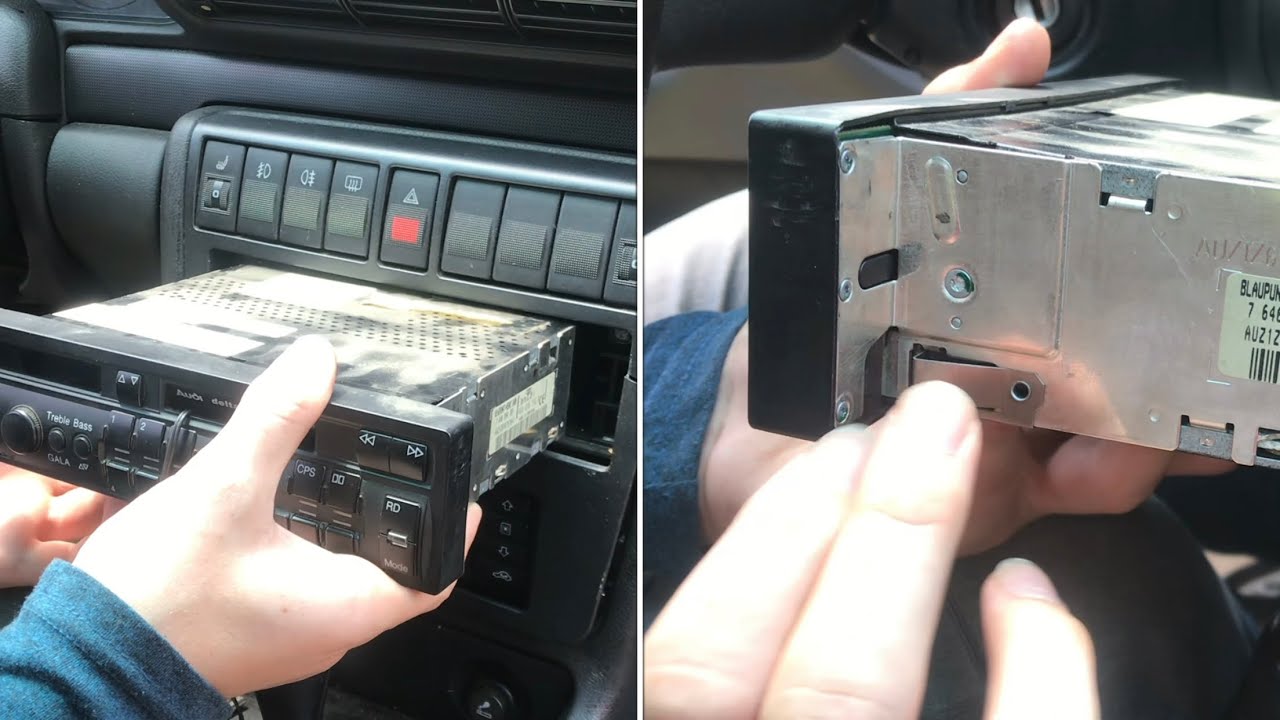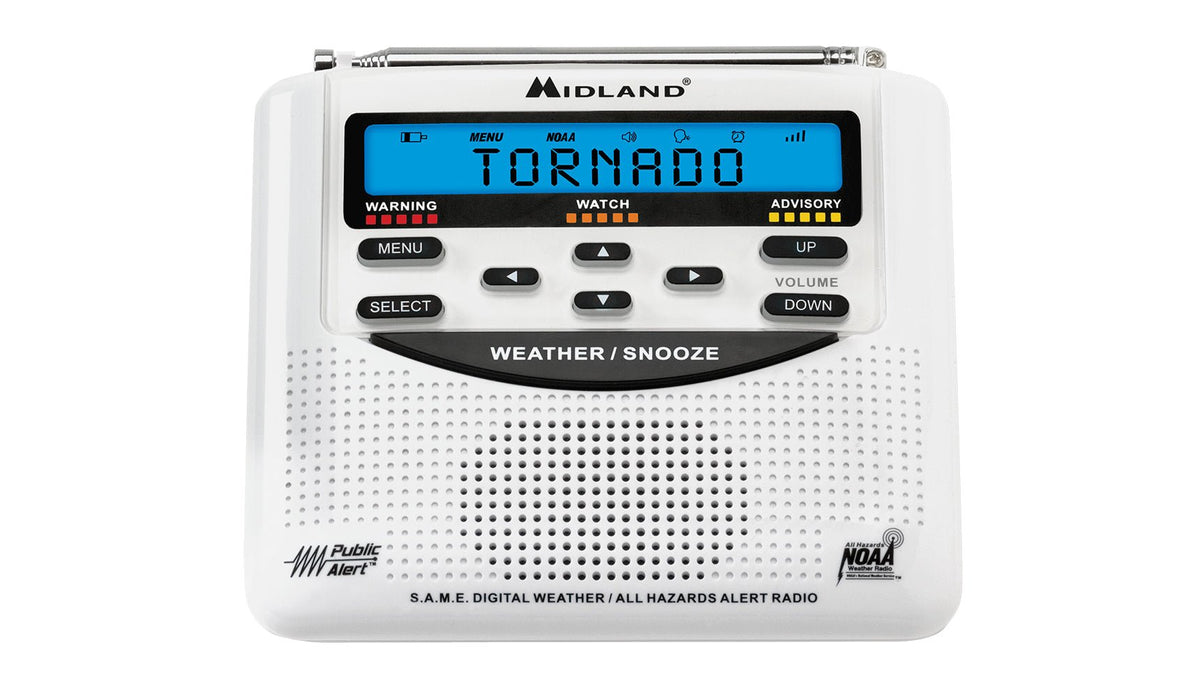Home>Devices & Equipment>Radio>What Is DIN Radio
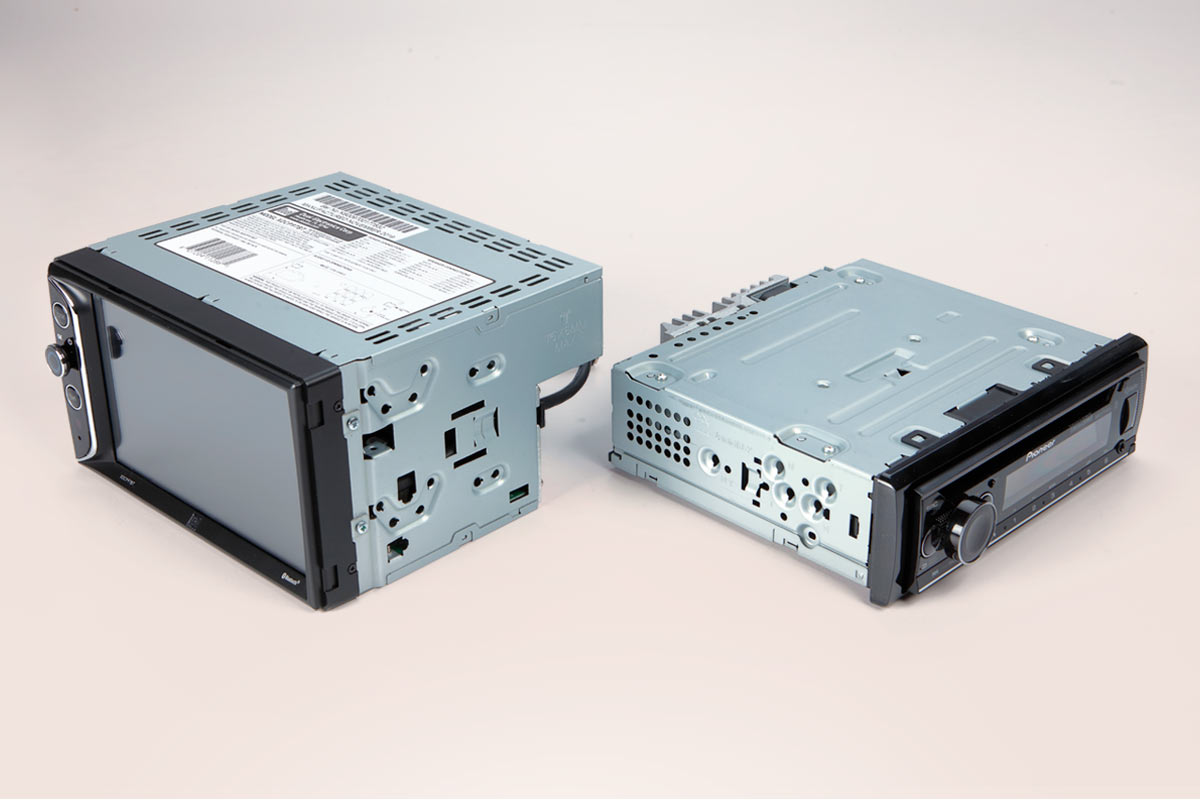

Radio
What Is DIN Radio
Modified: January 22, 2024
Discover the ins and outs of DIN radio, including its features, installation process, and compatibility. Upgrade your car's audio system and enjoy high-quality radio experience.
(Many of the links in this article redirect to a specific reviewed product. Your purchase of these products through affiliate links helps to generate commission for AudioLover.com, at no extra cost. Learn more)
Table of Contents
Introduction
Radio has been a significant medium for entertainment, information, and communication for over a century. It has evolved from the early days of AM and FM broadcasting to the modern digital radio technology we have today. In the world of car audio systems, DIN radio is a key component that provides a seamless connection between the driver and their favorite radio stations.
DIN, short for Deutsches Institut für Normung (German Institute for Standardization), refers to the standardized measurements for car audio head units. DIN radio, also known as a car stereo or car receiver, is the main control unit for the car’s audio system. It not only allows drivers to listen to AM/FM radio stations but also enables them to play CDs, connect to Bluetooth devices, and access various multimedia options.
Over the years, DIN radio has undergone significant advancements, keeping up with the ever-evolving technology in the automotive industry. From single-DIN to double-DIN units, car enthusiasts can choose the right DIN radio to meet their audio preferences and enhance their driving experience.
In this comprehensive guide, we will delve into the world of DIN radio, exploring its history, features, installation process, compatibility, popular brands, and price ranges. Whether you’re a car enthusiast looking to upgrade your audio system or simply curious about the technology behind car radios, this article will provide you with valuable insights and knowledge.
Definition of DIN Radio
DIN radio, also known as a car stereo or car receiver, refers to the main unit responsible for controlling the audio system in a vehicle. DIN stands for Deutsches Institut für Normung (German Institute for Standardization), which is responsible for establishing various industry standards. In the context of car audio, DIN refers to the standardized measurements for car radio head units.
DIN radios come in different sizes and configurations, the most common of which are single-DIN and double-DIN units. Single-DIN radios have a height of approximately 2 inches and a width of around 7 inches, while double-DIN radios measure approximately 4 inches in height and 7 inches in width. The term “DIN” primarily indicates the standardized height measurement of the radio unit.
These units are designed to fit into the dashboard of a vehicle and provide the driver with a range of audio options. These options typically include AM/FM radio reception, CD playback, auxiliary input for connecting external devices, Bluetooth connectivity for wireless audio streaming, and sometimes even navigation features. Some advanced DIN radios also support Apple CarPlay and Android Auto, allowing for seamless integration with smartphones.
The design of DIN radios ensures compatibility with most vehicle models and makes it convenient for users to replace or upgrade their car audio systems. The units are usually equipped with an LCD display, control buttons, and various input/output ports for connecting speakers, amplifiers, and other audio equipment.
Overall, the DIN radio serves as the central hub for controlling the audio system inside a vehicle. It provides users with a diverse range of audio sources and features, enhancing the overall driving experience and keeping passengers entertained throughout their journey.
History of DIN Radio
The history of DIN radio dates back to the early days of car audio systems and the development of standardized measurements for car radio head units. The concept of DIN radio originated in Germany with the establishment of the Deutsches Institut für Normung (German Institute for Standardization) in the early 20th century.
In the early days of car radios, manufacturers used a variety of sizes and configurations for their head units, which led to compatibility issues between vehicles. To address this problem, the German Institute for Standardization introduced DIN standardization for car radio sizes in the 1980s.
The DIN standard specified two main sizes: single-DIN and double-DIN. Single-DIN radios, with their standardized height of approximately 2 inches, became the most common size. Double-DIN radios, with a height of approximately 4 inches, were less common but offered a larger display and additional features.
This standardization allowed for easier installation and replacement of car audio systems, as the standardized dimensions ensured compatibility across different vehicle models and brands. By adhering to the DIN standard, car manufacturers could design their dashboards to accommodate these standardized radio sizes.
As technology advanced, DIN radios evolved to incorporate new features and connectivity options. In the early days, car radios were limited to AM/FM reception and cassette tape players. However, with the advent of CDs and digital media, DIN radios started including CD players and eventually MP3 compatibility.
In recent years, with the rise of smartphones and other mobile devices, DIN radios have embraced Bluetooth connectivity, USB ports, and auxiliary inputs. This allows drivers to connect their devices wirelessly or via cables to enjoy their favorite music, podcasts, and other audio content while on the road.
Furthermore, advancements in technology have led to the integration of navigation systems and touchscreen displays within DIN radios. These features provide drivers with turn-by-turn directions and enhanced control of their audio system, all in one unit.
The history of DIN radios showcases the continuous evolution and innovation in car audio technology. From standardizing sizes to incorporating new features and connectivity options, DIN radios have come a long way, revolutionizing the in-car entertainment experience.
Features of DIN Radio
DIN radios offer a wide range of features that enhance the audio experience and provide convenience for drivers and passengers. These features have evolved over time, keeping up with advancements in technology and the changing needs of car audio enthusiasts. Here are some key features commonly found in DIN radios:
1. AM/FM Radio Reception: DIN radios allow users to tune in to their favorite AM and FM radio stations, offering a wide variety of music, news, sports, and talk shows.
2. CD/DVD Playback: Many DIN radios include built-in CD or DVD players, allowing users to play their favorite albums or movies while on the road.
3. Bluetooth Connectivity: Bluetooth technology enables wireless audio streaming from smartphones, tablets, or other Bluetooth-enabled devices. This feature allows for hands-free calling and music playback, eliminating the need for messy cables.
4. Auxiliary Input: DIN radios often have an auxiliary input port, allowing users to connect their devices directly via a 3.5mm audio cable. This is useful for playing music from non-Bluetooth devices or for connecting other audio sources such as MP3 players or portable CD players.
5. USB Connectivity: Many DIN radios come equipped with USB ports, enabling users to connect their USB drives or smartphones for music playback and device charging.
6. Touchscreen Display: Some advanced DIN radios feature touchscreen displays that provide intuitive and user-friendly control over the radio’s settings, multimedia options, and navigation systems.
7. Navigation: A number of DIN radios include built-in GPS navigation systems, helping drivers reach their destinations with turn-by-turn directions. This eliminates the need for a separate navigation device and offers a convenient all-in-one solution.
8. App Integration: Some DIN radios support integration with smartphone apps such as Apple CarPlay or Android Auto, allowing users to access their favorite music streaming services, messaging apps, and navigation apps directly from the radio’s interface.
9. Equalizer and Sound Adjustment: DIN radios often feature built-in equalizers and sound adjustment settings, enabling users to customize the audio output to their preferences and achieve the desired sound quality.
10. Expandability: Many DIN radios offer expandability options, allowing users to connect additional audio components such as amplifiers, subwoofers, or rearview cameras for improved audio quality and safety.
These features make DIN radios versatile and adaptable to different audio preferences, ensuring an enjoyable in-car entertainment experience for drivers and passengers alike.
Types of DIN Radio
DIN radios come in various types and configurations, catering to different audio preferences and vehicle specifications. The two main types of DIN radios are single-DIN and double-DIN units, each offering unique advantages and features.
1. Single-DIN: Single-DIN radios are the most common type of DIN radio and have a height of approximately 2 inches and a width of around 7 inches. These units are compact and fit seamlessly into most vehicles’ dashboard configurations. Single-DIN radios typically have a basic display and a few control buttons, offering standard audio functionality such as AM/FM radio reception, CD playback, and auxiliary input.
2. Double-DIN: Double-DIN radios have a height of approximately 4 inches and a width of around 7 inches. This larger size allows for a more prominent display and additional features. Double-DIN units often incorporate touchscreen displays, advanced multimedia options, and built-in navigation systems. These units can provide a more interactive and immersive audio experience, allowing users to access a wider range of functionalities and control their audio system with ease.
It’s important to note that not all vehicles are compatible with double-DIN radios. Before purchasing a double-DIN unit, users should ensure that their vehicle’s dashboard has enough space to accommodate the larger size.
In addition to the main types outlined above, there are also specialized DIN radios that cater to specific needs or vehicle models, such as:
1. Motorized Flip-Out Screens: These DIN radios feature a motorized display that can be flipped out when in use and retracted when not in use, saving space in the dashboard.
2. Android-based DIN Radios: These units run on the Android operating system, providing access to a wide range of apps and features similar to a smartphone or tablet.
3. DIN Radio with Rear Seat Entertainment: Some DIN radios come with built-in screens or support for connecting rear seat entertainment systems, allowing passengers in the back seats to enjoy movies, games, or other media.
Ultimately, the type of DIN radio chosen depends on individual preferences, vehicle compatibility, and desired features. Whether opting for the simplicity of a single-DIN unit or the enhanced functionality of a double-DIN unit, there are DIN radios available to suit every need and budget.
Benefits of DIN Radio
DIN radios offer several benefits that enhance the audio experience and provide convenience for drivers and passengers. Here are some key advantages of using a DIN radio in your vehicle:
1. Upgradeability: DIN radios allow for easy replacement and upgrade of the car audio system. If you’re not satisfied with the factory-installed radio or if it malfunctions, you can simply swap it out for a new DIN radio without any major modifications to your vehicle’s dashboard.
2. Versatility: DIN radios offer a wide range of audio options. In addition to AM/FM radio reception, they often include features like CD/DVD playback, Bluetooth connectivity, USB ports, auxiliary input, and even smartphone app integration. This versatility allows you to enjoy various audio sources with ease.
3. Improved Sound Quality: Many DIN radios feature equalizers and sound adjustment settings, allowing you to fine-tune the audio output to your preferences. This enables you to enhance the overall sound quality and enjoy a more immersive listening experience while on the road.
4. Enhanced Connectivity: With Bluetooth connectivity and auxiliary input, DIN radios make it easy to connect your mobile devices and enjoy audio playback without the hassle of cables. You can wirelessly stream music, make hands-free phone calls, and even access your favorite navigation apps directly from the radio unit.
5. Convenient Control: DIN radios typically have user-friendly interfaces with intuitive controls. Many units now come with touchscreen displays, making it easy to navigate through menus and adjust settings. This allows for convenient and safe operation while driving.
6. Integration with Vehicle Systems: Some advanced DIN radios are designed to integrate seamlessly with other vehicle systems. For example, they can display information from the car’s onboard computer, provide access to climate controls, or even act as a monitor for backup cameras. This integration enhances the overall driving experience and adds functionality to your vehicle.
7. Aesthetically Pleasing: DIN radios are designed to fit seamlessly into the vehicle’s dashboard, creating a clean and integrated look. With their standardized dimensions, they not only offer functionality but also enhance the overall aesthetics of the interior cabin.
8. Increased Resale Value: Upgrading your car’s audio system with a DIN radio can increase its resale value. A modern and feature-rich head unit is a desirable feature for potential buyers, making your vehicle more attractive in the used car market.
9. Entertainment on Long Drives: With the ability to play CDs, connect to Bluetooth devices, and access various multimedia options, DIN radios provide entertainment during long drives. Passengers can enjoy their favorite music, podcasts, or audiobooks, making the journey more enjoyable for everyone.
Overall, DIN radios offer numerous benefits, from improved sound quality and versatility to enhanced connectivity and control. Whether you’re looking to upgrade your car’s audio system or simply enhance your in-car entertainment experience, a DIN radio provides a convenient and feature-rich solution.
Installation of DIN Radio
Installing a DIN radio in your vehicle is a relatively straightforward process, especially if you’re replacing an existing head unit. While it is recommended to consult the specific installation instructions provided by the manufacturer, here is a general guide to help you with the installation:
- Gather the necessary tools: Before getting started, ensure you have the required tools, including a screwdriver set (Phillips and flathead), wire cutters/strippers, electrical tape, and possibly a pry tool to remove any trim pieces.
- Disconnect the battery: Begin by disconnecting the negative terminal of your vehicle’s battery to prevent any electrical mishaps while working on the radio installation.
- Remove the existing head unit (if applicable): If you’re replacing an existing head unit, carefully remove any trim pieces surrounding the radio using a pry tool or screwdriver. Unscrew any screws holding the unit in place and gently pull it out. Disconnect the wiring harness and antenna cable.
- Prepare the wire harness: If the DIN radio came with a wire harness, connect it to the wiring harness of your vehicle. If not, you will need to carefully match and connect the wires from the vehicle’s harness to the appropriate wires on the DIN radio harness. Use wire connectors or solder and electrical tape to secure the connections.
- Mount the DIN radio: Slide the DIN radio unit into the empty slot in the dashboard. Align the mounting holes of the radio with the holes in the mounting bracket or dash kit. Secure the radio in place using the screws provided.
- Connect the wiring: Plug the wiring harness from the vehicle into the back of the DIN radio. Ensure that all connections are secure and that the wiring is neatly organized.
- Test the installation: Before reassembling any trim pieces, reconnect the negative terminal of the car battery and turn on the ignition to check if the DIN radio powers up and functions properly. Test the AM/FM radio, CD player (if applicable), Bluetooth connectivity, and any other features to ensure everything is working as expected.
- Reassemble and clean up: Once you’re satisfied with the installation, reassemble any trim pieces that were removed earlier. Secure them in place using the appropriate screws or clips. Remove any excess wiring and tidy up the area behind the radio.
It’s worth noting that certain vehicles may require additional steps or specific installation procedures. If you’re unsure or uncomfortable with the installation process, it is recommended to seek professional assistance or consult a car audio specialist.
By following the proper installation procedures, you can enjoy the benefits of a DIN radio and enhance your in-car audio experience.
Compatibility of DIN Radio
DIN radios are designed to be compatible with a wide range of vehicles, making it easier for car enthusiasts to upgrade or replace their existing head units. However, it’s important to consider a few factors to ensure compatibility with your specific vehicle:
1. DIN Size: The first consideration is the size of the DIN radio. Most vehicles come equipped with either a single-DIN or double-DIN slot in the dashboard. Single-DIN radios are approximately 2 inches in height, while double-DIN radios are around 4 inches in height. Measure the available space in your vehicle’s dashboard to determine the appropriate size for your DIN radio.
2. Wiring Compatibility: The wiring harness of the DIN radio needs to be compatible with the wiring harness of your vehicle. Ensure that the connectors and pin configurations match between the two. Sometimes, a separate wire harness adapter may be required to connect the DIN radio to the vehicle’s wiring harness. This adapter will allow for a seamless integration of the new radio with your vehicle’s electrical system.
3. Antenna Compatibility: Check the compatibility of the antenna connection on the DIN radio with your vehicle’s antenna. Common types of antenna connections include Motorola plugs, DIN plugs, and ISO plugs. If necessary, you may need to purchase an antenna adapter to ensure proper connectivity.
4. Dashboard Compatibility: Consider the design and layout of your vehicle’s dashboard. Some vehicles have integrated displays, climate control panels, or other components that may be affected by the installation of a DIN radio. In such cases, you may need additional installation kits or adapters to properly fit the DIN radio into the dashboard without interfering with other components.
5. Steering Wheel Controls: If your vehicle has steering wheel controls for audio functions, ensure that the DIN radio is compatible with those controls or has the capability to connect to an adapter that can retain and integrate the steering wheel controls.
6. OEM Integration: If you want to retain other OEM features like factory amplifiers or other vehicle-specific functionalities, consider a DIN radio that supports OEM integration or has provisions for connecting external modules to retain those features.
Prior to purchasing a DIN radio, consult the product specifications, user manuals, or contact the manufacturer or a car audio specialist to verify the compatibility with your specific vehicle make, model, and year. They can provide guidance and ensure that the DIN radio you choose is compatible with the electrical and physical requirements of your vehicle.
By considering these compatibility factors, you can select a DIN radio that seamlessly integrates into your vehicle and enjoy an enhanced audio experience on the road.
Popular Brands of DIN Radio
When it comes to choosing a DIN radio for your car, there are several reputable brands that offer high-quality products with advanced features and reliable performance. Here are some popular brands known for their DIN radios:
- Pioneer: Pioneer is a well-established brand in the car audio industry, known for its innovative and feature-rich DIN radios. Pioneer offers a wide range of options, from entry-level to high-end models, with advanced features like Apple CarPlay, Android Auto, touchscreen displays, and superior sound quality.
- Kenwood: Kenwood is another renowned brand that offers a diverse selection of DIN radios to suit different needs and budgets. Known for their user-friendly interfaces, Kenwood radios often come equipped with built-in navigation, Bluetooth connectivity, and compatibility with popular music streaming services.
- Alpine: Alpine is recognized for its premium audio products, including high-quality DIN radios. Alpine offers a combination of cutting-edge technology, excellent sound quality, and sleek designs. Their DIN radios often come with advanced features like touchscreen displays, compatibility with Apple CarPlay and Android Auto, and customizable sound settings.
- Sony: Sony is a well-known brand that manufactures a wide range of electronic products, including car audio systems. Sony DIN radios offer a balance between features, performance, and affordability. They often include Bluetooth connectivity, USB ports, CD/DVD playback, and intuitive user interfaces.
- JVC: JVC is a brand that focuses on delivering high-quality sound experiences. JVC DIN radios offer features such as Bluetooth connectivity, USB ports, and auxiliary inputs. They are known for their durability and ease of use, making them a popular choice among car audio enthusiasts.
These are just a few examples of popular brands that specialize in DIN radios. Other notable brands that you may consider include Clarion, Blaupunkt, Panasonic, and JBL. It’s advisable to research the different models and compare features, pricing, and user reviews to find the DIN radio that best suits your requirements and preferences.
Keep in mind that the popularity of brands can vary depending on factors such as region, availability, and customer preference. Ultimately, it’s important to choose a brand that aligns with your audio needs and offers the features and performance you desire.
Price Range of DIN Radio
The price range of DIN radios can vary significantly based on factors such as brand, features, quality, and performance. Generally, DIN radios are available in a range of price points to accommodate different budgets and audio preferences.
Entry-level DIN radios typically offer basic features like AM/FM radio, CD playback, and auxiliary input. These models are generally more affordable and can range anywhere from $50 to $150 USD. While they may lack some advanced features like Bluetooth connectivity or touchscreen displays, they still provide a significant upgrade over factory-installed audio systems.
Mid-range DIN radios offer a balance between price and features. These units typically include additional functionalities such as Bluetooth connectivity, USB ports, and enhanced sound customization options. Prices for mid-range DIN radios typically range from around $150 to $400 USD, depending on the brand and specific features offered.
Higher-end DIN radios, often from well-known brands, come packed with advanced features and superior sound quality. These models may include features like Apple CarPlay, Android Auto, larger touchscreen displays, built-in navigation, and compatibility with high-resolution audio formats. Prices for high-end DIN radios can range from $400 to over $1000 USD, depending on the brand and the level of features and performance offered.
It’s important to note that prices may vary depending on region, availability, and any ongoing promotions or discounts. Additionally, certain premium features like built-in navigation or compatibility with specific smartphone integration platforms may add to the overall cost of the DIN radio.
When considering the price range of DIN radios, it’s essential to balance your budget with the desired features and performance level. Carefully evaluate the features that are important to you and prioritize your audio needs to make an informed decision within your budget.
Lastly, it’s worth considering the long-term value and satisfaction that a higher-priced DIN radio may provide, as they often offer better build quality, reliability, and an enhanced audio experience that can greatly improve your driving enjoyment.
Conclusion
DIN radios have revolutionized the in-car audio experience, offering a wide range of features and functionality to enhance your driving enjoyment. Whether you’re looking to upgrade your existing audio system or replace a faulty head unit, DIN radios provide a convenient solution with compatibility across various vehicle models.
From basic single-DIN units to advanced double-DIN models, DIN radios come in different sizes and configurations to suit your needs and preferences. They offer features like AM/FM radio reception, CD/DVD playback, Bluetooth connectivity, USB ports, touchscreen displays, and even navigation systems. The versatility of DIN radios allows you to enjoy various audio sources and seamlessly integrate your mobile devices into your car’s audio system.
Popular brands like Pioneer, Kenwood, Alpine, Sony, and JVC offer a wide range of DIN radios with excellent sound quality and advanced features. The pricing of DIN radios varies based on the brand, features, and performance, catering to different budgets and audio requirements.
Installation of a DIN radio is typically straightforward, and with the proper tools and guidance, it can be easily accomplished. However, it is recommended to consult installation instructions and, if needed, seek professional assistance to ensure a seamless and proper installation.
Overall, DIN radios provide numerous benefits, including improved sound quality, enhanced connectivity, convenience, and the ability to personalize your audio system. Whether you’re a music enthusiast, a frequent traveler, or someone who simply enjoys an immersive audio experience while driving, a DIN radio can greatly enhance your in-car entertainment.
When choosing a DIN radio, consider factors such as compatibility with your vehicle, the features you desire, and your budget. Research different brands and models, read customer reviews, and compare prices to make an informed decision that best suits your needs.
Upgrade your car’s audio system today with a DIN radio and enjoy a more enjoyable and immersive audio experience on your journeys.

